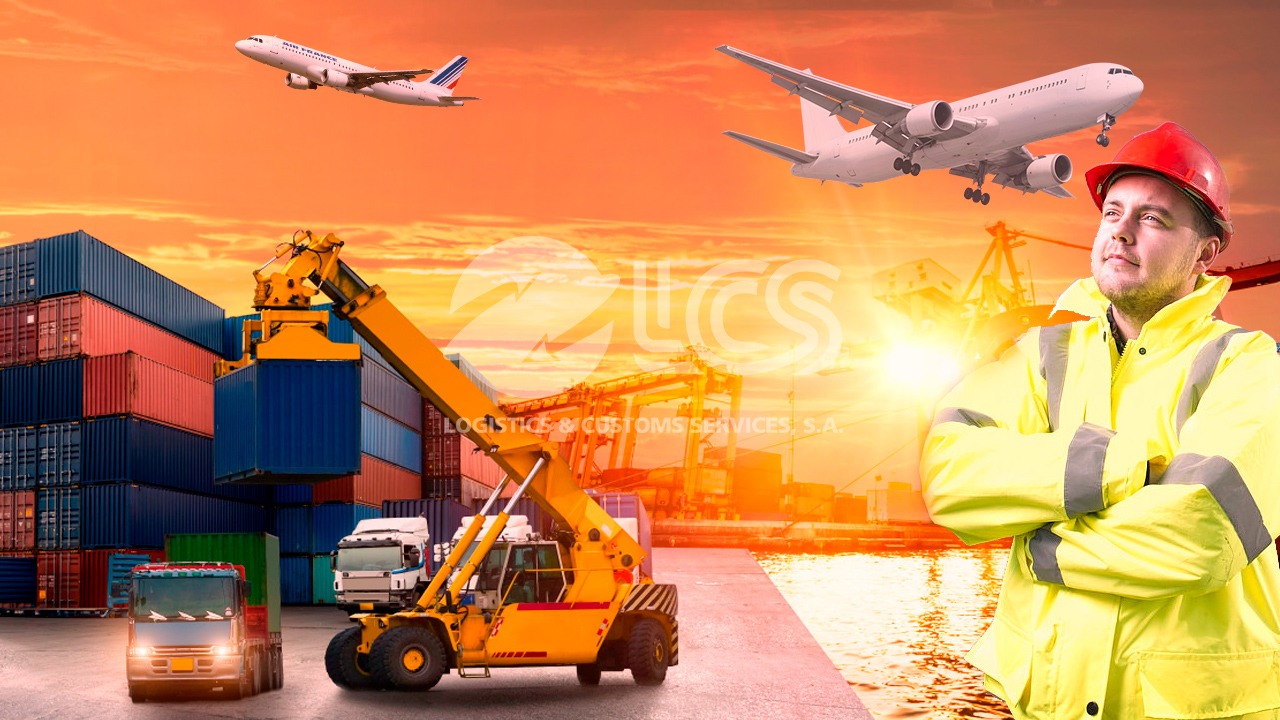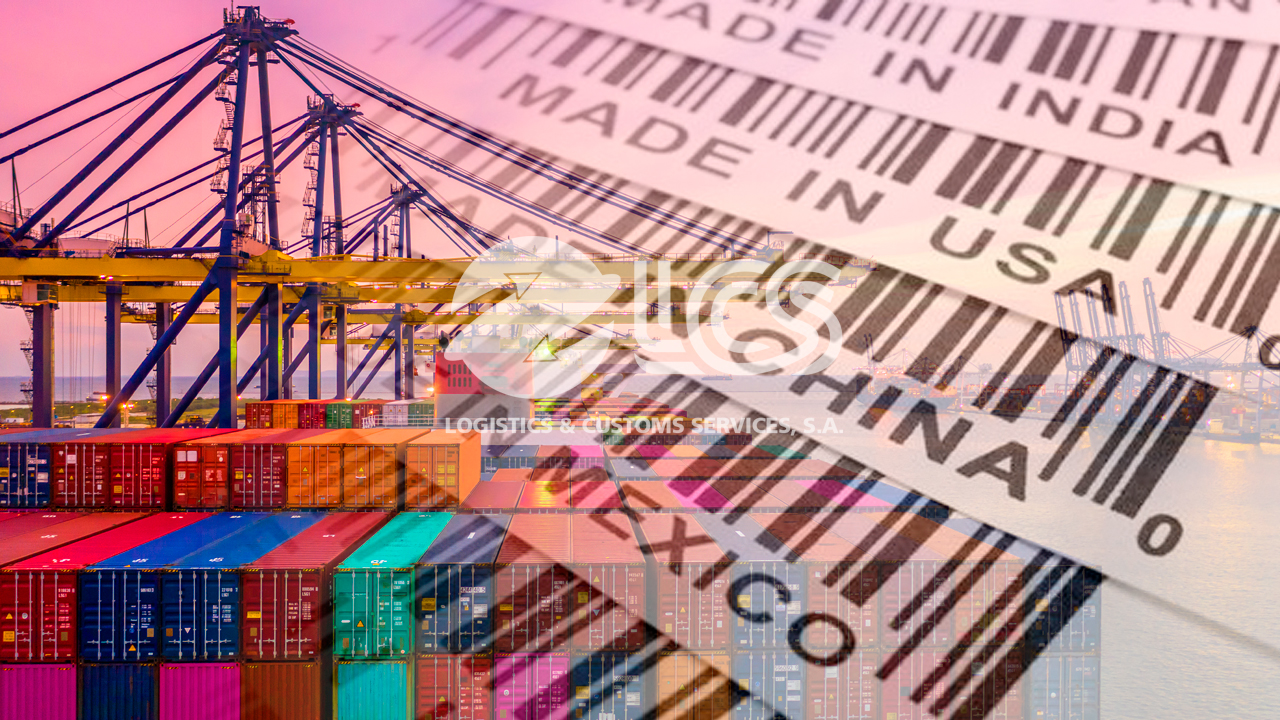Blog | Customs and Logistics
Panama's first customs and logistics blog
Panama's first customs and logistics blog

A year after Panama established diplomatic relations with the People's Republic of China, after the surprise break in relations with Taiwan, Panama and China began negotiations for a Free Trade Agreement in the middle of this year.
For all Panamanians, Chinese interests are very clear: they must be the same as those of the Spanish 500 years ago, that of La Gran Colombia de Bolívar, and the ones of the French and North Americans: the Interoceanic Highway and the connection of the Americas.
In the case of Panama, the isthmus seeks the advantages of entering the largest market in the world, with 1.4 billion people and a growing middle class, and positioning itself as the gateway for Chinese products and investments throughout the region.
Importing Chinese products to Panama is very obvious, but what about exporting from Panama to China? Are there real opportunities? In this series of articles, we will review the export relations of other Latin American nations with China, in order to find our own opportunities.
Exporting to China is a possibility nowadays. Being the second largest economy in the world, China has a great need to import products and services in order to sustain its gigantic level of export. This need keeps it in a constant search for new partners and markets, becoming a very attractive opportunity for companies worldwide.
It´s only a matter of looking at numbers to understand that China is a market with its own name, imports of goods and services exceed 18% as a percentage of its GDP, which is a huge market given the magnitude of Chinese GDP which reaches the 11 billion dollars.
For its part, China has shown great interest in Latin American markets with Pacific coasts; it already has Free Trade Agreements with Chile, Peru and Costa Rica; it has expressed on more than one occasion its desire to do the same with Mexico; and also proposed to invest for the construction of the Grand Interoceanic Canal through Nicaragua, where it is likely that the final blow to stop the works was what allowed the establishment of diplomatic relations with Panama.
Let's review how the negotiations and treaties of our Latin American brothers have been and let's find our own way to China. This time we will review the route of Chile.
The Free Trade Agreement between Chile and China was finalized in 2005, coming into force in the fourth quarter of 2006. It should be noted that said FTA with Chile is the first of its kind signed by China in its history; and it is that the diplomatic ties between both nations date from the 70's. In fact, Chile was the first country to support China for its entry into the World Trade Organization.
The Chilean goal when signing these treaties was to increase its export of agricultural, livestock, forestry and fishing products, since until that date its supply of products to China was concentrated in copper and cellulose. Regarding imports, South Americans sought to benefit from products not manufactured in their territory: machinery, computers, printers, automobiles, cell phones, among others. And, of course, to attract Chinese investment to the country.
By 2008, the South American country's exports had doubled, making the Asian power the Chileans' main trading partner. However, the offer had not changed, it was only made in a larger amount. The mining sector maintained more than 80% of total exports, concentrated almost entirely on copper. Agriculture, livestock, fruit growing, forestry and fishing did not show significant growth; and an interesting fact is that the participation of Chilean SMEs was almost null. One of the main disadvantages that Chilean SMEs had to take advantage of the FTA is the difficulty of access to information.
That same year, the Supplementary Agreement on Trade in Services was signed for the temporary entry of business people. Chile offered 15 sectors, including: professional services, computing, mining, construction, distribution and environmental services. Two years later, in 2010, Chile managed to make changes to these agreements to grant its expatriates the same conditions as Chinese nationals.
In 2012 Chile seek to expand the FTA in order to encourage investment. A Supplementary Agreement was signed regarding the creation of a legal framework for investments between both nations, which had to be modified two years later in order to improve it. During these years, Chile still had difficulties in incorporating SMEs, which despite having more than 4 thousand exporting SMEs, their participation represented only 0.2% of total exports.
In el 2016, 10 years after the signing of the FTAs, Chilean exports to the Asian region had increased by 279%, reaching 6% of Chilean GDP. It should be noted that at this time shipments not related to copper reached 20% of total exports, mainly fruits.
By December 2017 the nations signed new extensions, which were described as: "The FTA 2.0" and "the confirmation of a success" by the Chilean press. This expansion included new areas such as: electronic commerce, environmental issues and public purchases, among others. Today, China is Chile's main trading partner and the main destination for Chilean exports.
For Chile, the Free Trade Agreement with China is a success story, without a doubt. Since its signing, the commercial exchange has been growing at an annual rate of 16% and is a fundamental tool in its trade. Chile was clear about its goals from the beginning: to increase the levels of exported products, diversify its offer, and attract investments and knowledge that would help the country improve the quality of its products.
Nevertheless, there is no success without errors, struggles and corrections to be made. Its great Achilles heel was achieving the early incorporation of its SMEs, which is the true engine of national economies.
In the case of Panama, we must be aware that we do not have a star product for export, unlike what copper was and still is for Chile. Forbes Mexico magazine highlighted that during 2016 Panama exported 50.9 million dollars to China (representing an increase of 22% over 2015). However, it should also be noted that the main products were waste and scrap of copper and aluminum, crustaceans, wood and coffee.
There is no doubt that the signing of an FTA will increase exports and imports, and will attract new investments to Panama, especially in the technological and logistics areas. But the challenge is (as it has always been) to achieve a good distribution of benefits.
In order for an FTA with China to result in real benefits for the country, it is essential to incorporate, in terms of exports, small and medium-sized companies. And, learning from what we know about the Chilean case, we must take the measures from the beginning.
Panamanian SMEs interested in exporting to China need to fully understand the Chinese market and its peculiarities, and focus on regional markets where they could guarantee a level of delivery. The Asia Pacific Program of the National Library of Congress of Chile pointed out the problems faced by Chilean SMEs to enter the Asian market, which are:
We see how, except for the first point, the challenges for SMEs are summarized in lack of knowledge and expertise. Therefore, before considering exporting to the Asian continent, it is essential that Panamanian SMEs approach customs companies with experience that can provide quality advice.
Regarding the financial aspect, a state entity such as AMPYME (SMEs Authority) should develop a project like the aforementioned Chilean Asia-Pacific Program, but focused on supporting the organization and financing of SMEs interested in taking advantage of the negotiations with the People's Republic of China.
What do you think about these negotiations? What topic do you want us to address?




We are a customs agency that offers personalized services for the management of imports, exports and procedures with institutions, derived from the development of international trade.
We have a highly qualified staff for handling all types of customs procedures, trained to provide convenient and effective solutions in each of our clients´ operations.
Contacte a su corredor de aduana en Panamá
Ave. Ricardo J Alfaro, Edificio Century Tower, Piso 9, Oficina 918.
261-6530 / 261-6104